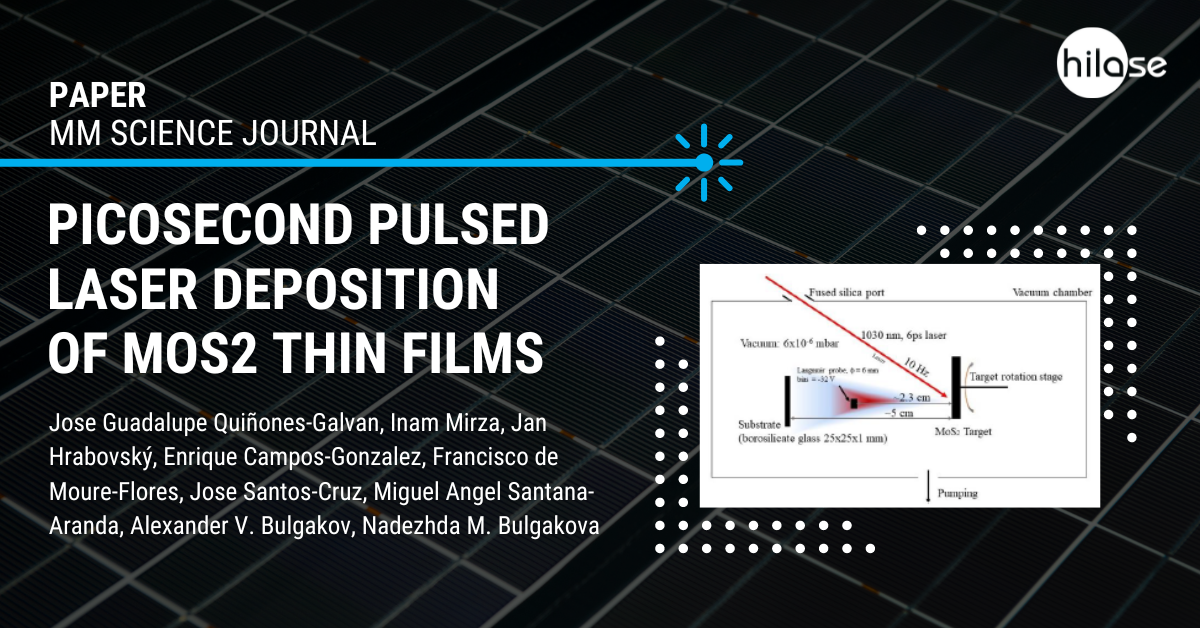Researchers from the Scientific Laser Applications department of the HiLASE Centre have collaborated on a new paper published in the MM Science Journal. Congratulations to Inam Mirza, Jan Hrabovský, Alexander V. Bulgakov and Nadezhda M. Bulgakova!

The collaborated on the paper titled Picosecond pulsed laser deposition of MOS2 thin films with representatives of three Mexican institutions: Universidad de Guadalajara (Jose Guadalupe Quiñones-Galvan, Miguel Angel Santana-Aranda), Instituto Nacional de Investigaciones Nucleares (Enrique Campos-Gonzalez) and Universidad Autonoma de Queretaro (Francisco de Moure-Flores, Jose Santos-Cruz).
MOS2 thin films were grown by the pulsed laser deposition technique using a picosecond laser at a wavelength of 1030 nm. The plasma ion mean kinetic energy and density were estimated from the time-of-flight distributions measured using a Langmuir planar probe. It has been found that the mean kinetic energy decreases with increasing the laser pulse energy. This unusual effect is explained by the difference in the volatility of the vaporized species. Samples were structurally characterized by Raman spectroscopy and grazing angle X-ray diffraction. It was found that thin films of amorphous matrices containing MOS2 nanocrystallites were grown. Optical characterization carried out by UV-vis spectroscopy yielded transmittance values above 90% in the visible spectral range and an indirect electronic transition at 1.4 eV. Chemical oxidation states for molybdenum and sulfur were analyzed by means of X-ray photoelectron emission spectroscopy, which revealed Mo-S bonding states, confirming the growth of MOS2.








